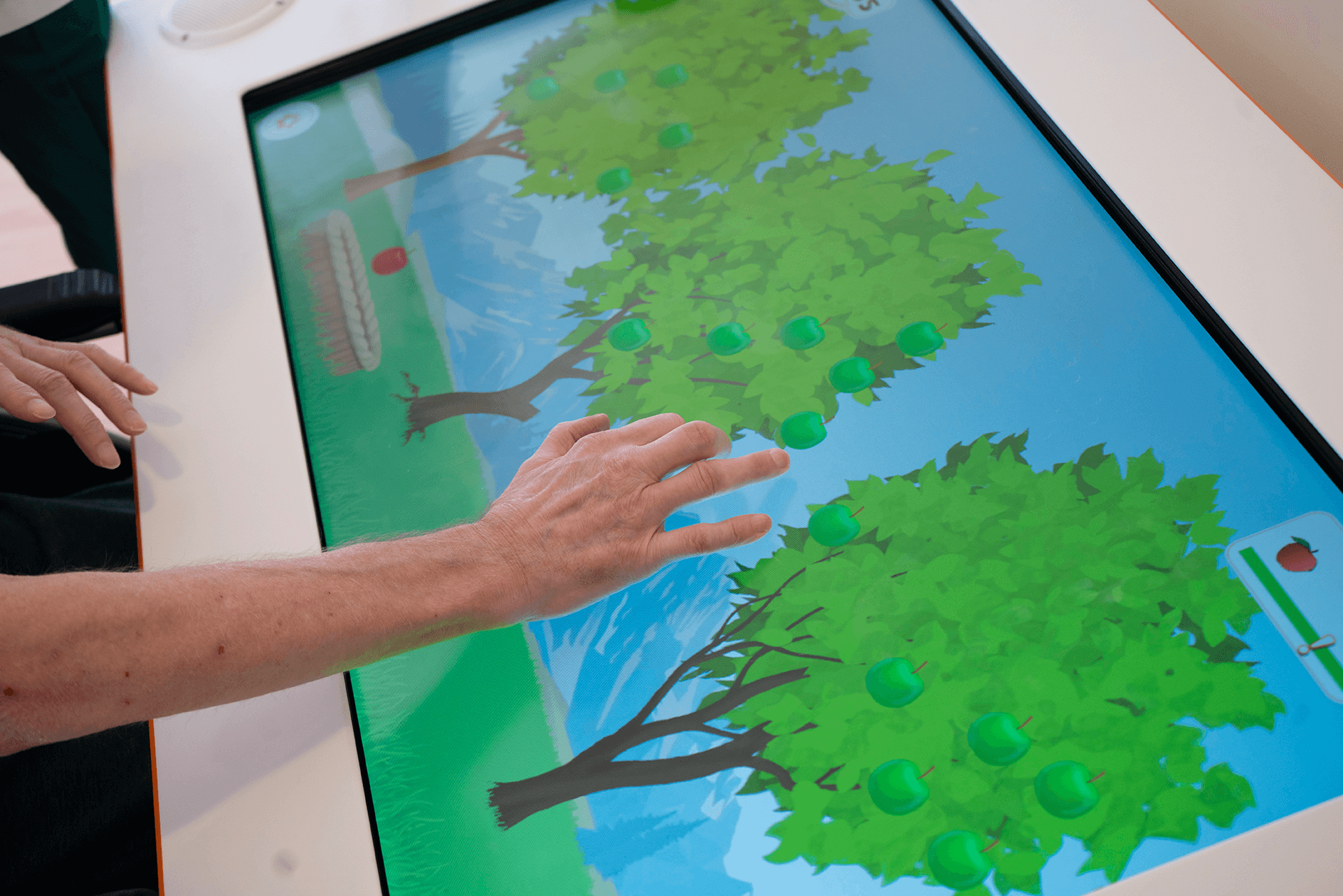
This week at Askham Rehab, we’re delighted to share the story of one of our stroke rehabilitation patients.
Our patient lives in Guyhirn (near Wisbech) and is married with children. Having suffered a stroke earlier in the year, he was admitted to our team at Askham on 26th May, 2021.
The left-sided thalamic intracranial haemorrhage left him with speech deficits, as well as difficulties with active movement in his right upper and lower limb. Following our assessments, it appeared that he was also struggling with functional activities and tasks, and as a result, needed further neuro rehab to try and improve them.
Stroke Rehabilitation: Initial Assessments and Treatment
Upon his admission to our rehabilitation centre, each team assessed him (clinical psychology, occupational therapy, speech & language therapy and physiotherapy). Following on from the assessments, we felt collectively as a team that he required ongoing rehab in all 4 areas.
In addition to getting fit again, his main goals involved walking, speaking, being able to return home to his family and – at some point – returning to work.
Sara, our Clinical Lead and Outpatients Service Manager, supported him throughout his treatment, and has since told us about her experience: “He was so incredibly motivated. He wanted to be active all the time, and wanted exercise programmes to continue his therapy when he wasn’t in sessions. He was always pushing himself; once, he said ‘I’m bored’ – and this gave us the opportunity to face a new challenge and think outside the box to come up with engaging ideas and activities.”
His treatment started with very active, functional tasks with occupational therapy and physiotherapy, whilst working on strength training for the lower limbs. The two teams worked together on his upper limb, with a combination of hands-on therapy, robotics, Saebo and neuro-muscular stimulation.
The occupational therapy team proceeded to work on functional tasks with personal care, and the care team continued this work with facilitating movements and activities. Meanwhile, the PT team worked on strength training, targeting the pelvis and hip area to aid weight-bearing, and he was soon able to progress to stepping and mobilising.
Additionally, the speech and language therapy team worked with him on oro-motor exercises to aid movement and build tolerance. This involved word formation training, as well as work on sentence structure. Simultaneously, we started him on an exercise programme, and the psychology team supported him with strategies to help him with his mood.
Advancing to Robotics
Throughout his treatment, he made use of our robotics suite. He used the large gym and satellite gyms to support his therapy, and participated in groups and activities. He also used the outdoor spaces to work on different gait patterns and balance work.
We incorporated several of our robotic machines into his treatment, including the Omega Plus. This helped him work on his lower limb strength, control, exercise tolerance and cardiovascular training. He also made use of the Myro table for coordination and perceptual training, in addition to the Pablo device for core balance and work.
Stroke Rehabilitation Treatment: Reflection, Recovery and Looking to the Future
Commenting on his treatment, Sara said: “He responded to the treatment very quickly, mainly because he was so engaged and motivated to change. His speech also improved very quickly, and he was able to make his needs known. Very soon, he was able to step-transfer with the help of staff and a quad stick.”
When reflecting on the most challenging parts of his treatment, Sara said: “I think the hardest part for him was being so reliant on people initially, as he has always been so independent. He missed his wife and children a lot too.
“However, he was always very motivated and engaged. He would grab anything we asked him to do with both hands and pass it with flying colours.”
The location of his treatment certainly helped with his recovery. He was close to his wife and children, which meant that they could visit very regularly. The quietness and open surroundings also allowed him to venture outside and, towards the end of his stay, he often took himself outside for walks.
Working with our patient has allowed us to incorporate everything that we work towards as a team – from empowering residents to lead in their rehab programme to working towards a completely individualised and holistic approach to care.
After a five-month treatment programme, he can now hold a telephone and have face-to-face conversations using full sentences. Physically, he left us independently mobile with no walking aid. His mood was brighter, and required no care at home as he had worked so hard on the functional and personal tasks in occupational therapy.
Throughout his stroke rehabilitation treatment, we were granted extra funding for him to remain at Askham so that we could facilitate his independence. We were delighted to successfully achieve this, before discharging him from Askham on 21st October 2021.
Working with him has been incredibly rewarding. We were all able to push ourselves to get the very best out of him – and to see him walk out of the unit with his wife was amazing. His family supported him constantly throughout, and they are so pleased to have him home.